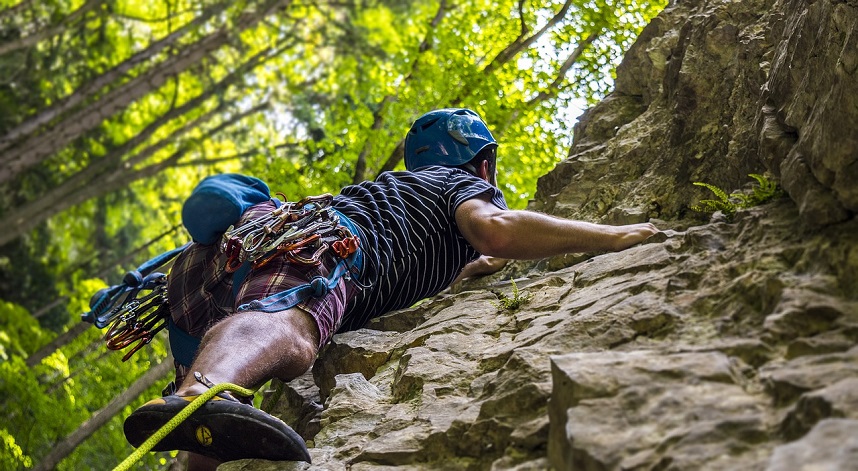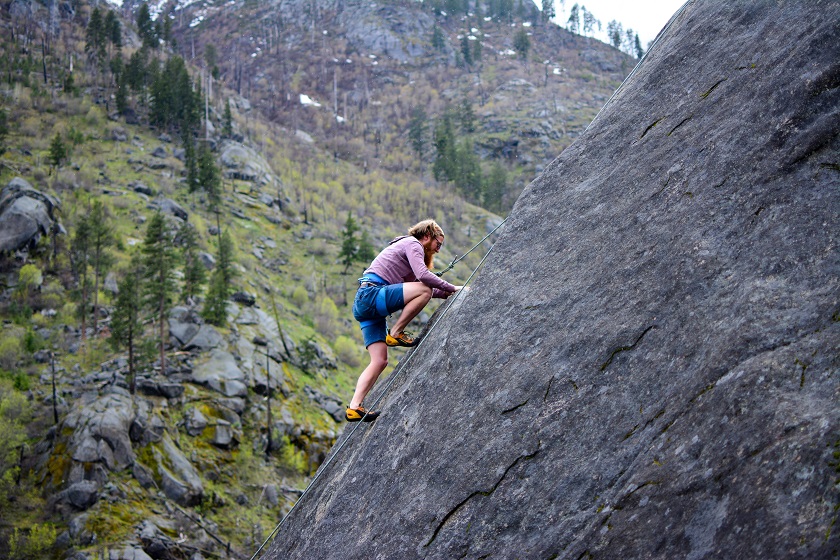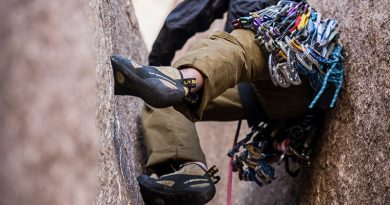The only thing worse than having climbing shoes too small is having ones that are too big. Though they may be more comfortable, they prove to be far less useful on the rocks.
And, as we will see, they can prove very difficult to shrink.
Below, I’ll talk about some of the viable ways that you can attempt to shrink your climbing shoes. First, however, consider the following instances in which shrinking climbing shoes may be necessary.

Why Do People Shrink Climbing Shoes?
The obvious answer to this question is that they do it when their shoes are too big. However, these cases can prove quite a bit more complicated than that.
For instance, while it’s true that some beginners tend to overestimate their shoe size and end up with ones too large, that’s only half the story.
Many people, for instance, find that their shoes stretch overtime—or that their feet become smaller when losing weight. Because buying new climbing shoes can be expensive (though sometimes cheap!), some choose to try shrinking their climbing shoes before buying a new pair.
Below, we’ll go over some of the most commonly-suggested ways to shrink your climbing shoes. Keep in mind that the information refers to leather climbing shoes. Unfortunately, those wearing synthetic shoes don’t have many options in this regard.
How Can I Shrink My Climbing Shoes?
With that in mind, let’s take a closer look at how you can shrink your shoes.
1. Wash them
Many people note that after washing their shoes, they tend to shrink. Do keep in mind that for this method to work, you’ll need to make sure that you don’t wear your shoes before they are completely dry. By doing so, you’ll have your shoes conform to the shape of your feet—instead of shrinking in on themselves.
Many people have reported success with this method of shrinking climbing shoes. Keep in mind, however, the effectiveness of this method can differ form person to person. While some shoes may stay shrunk, others may expand quickly after wearing them as they get re-broken in.
With this in mind, consider washing your shoes as the first recourse to having them shrink. You may just find that it works.
2. Use Newspapers
If you’re looking for a method that’s a bit more complicated and effective, try placing newspapers within the shoes every hour after washing them. Make sure that these newspapers are changed out every hour so that you can enjoy maximum benefits.
This seemingly off-the-wall method may get you a few funny looks, but several have found success with it. Just keep in mind that if you decide to do it, you’ll need to replace the newspapers every hour until your shoes dry.
3. Leave Them in the Heat
Finally, many note that they have had success shrinking their shoes by leaving them in the heat—such as the sunshine.
Keep in mind that these individuals have had success only through natural heating sources. After letting them sit out, you may notice that your shoes have a tighter, snugger fit.
Should I Put My Shoes in the Dryer or the Oven?
If you’ve looked into either shrinking or stretching your climbing shoes before, you’ve probably come across the advice that you should place your shoes in the oven.
As you can guess, this is never a good idea. By doing so, you can severely damage your shoe, as well as put you and those around you at a serious health risk.
How about placing your climbing shoes in the dryer? That works to make clothes smaller—so it will work for your shoes, too, right?
Again, no. Putting your shoes through any kind of intense heat such as this is never a good idea. Not only could you start melting and damaging the rubber soles, but you can be putting yourself in danger.
Instead, if you need to shrink your climbing shoes, consider one of the methods above.
Do Climbing Shoes Stay Shrunk?
Unfortunately, keep in mind that no matter what method of climbing shoe shrinking you use, you’ll likely not see permanent results.
That’s because your shoes likely won’t stay shrunk. Though you may be able to get them to shrink a bit long enough to do a little climbing, they will eventually start to stretch back out.
You can accelerate this by climbing with them, as the heat and moisture from your sweating feet will make them stretch.
To a degree, this is natural, as shoes generally tend to get larger as you break them in—including climbing shoes.
For this reason, trying to shrink your climbing shoes can often feel like a losing battle. And it’s for this reason that some people suggest other alternatives—such as wearing socks. Though many rock climbers consider wearing socks taboo and wouldn’t want to be caught with them on, investing in a pair of thin socks may help make your shoes fit more snugly.
And no matter your aversion to wearing socks while climbing, if they can make your shoes fit better, they’re likely worth it.
Should I Just Buy A New Pair?
All of this may leave you asking if you should just invest in a pair of new shoes. Ultimately, that decision is up to you. Just be sure that if you do, you don’t make the mistake of buying another pair that is too large.
If you’re looking to buy new climbing shoes, check out our top 10 favourite picks for beginners, or our buyers guide for intermediate climbing shoes.
The Bottom Line
Investing in a pair of climbing shoes that fits can make or break your climb. Shoes that are too large can make it difficult to maneuver, putting you at risk on the rocks.
For this reason, many who have shoes that are too large attempt to shrink their climbing shoes. Unfortunately, while some methods may provide temporary success, none of them can shrink shoes in the long term.
Because of this, many find it better to wear small, thin socks or simply buy a new pair altogether. If you have a pair of climbing shoes that is too large, consider the above information to make the choice that’s right for you.






